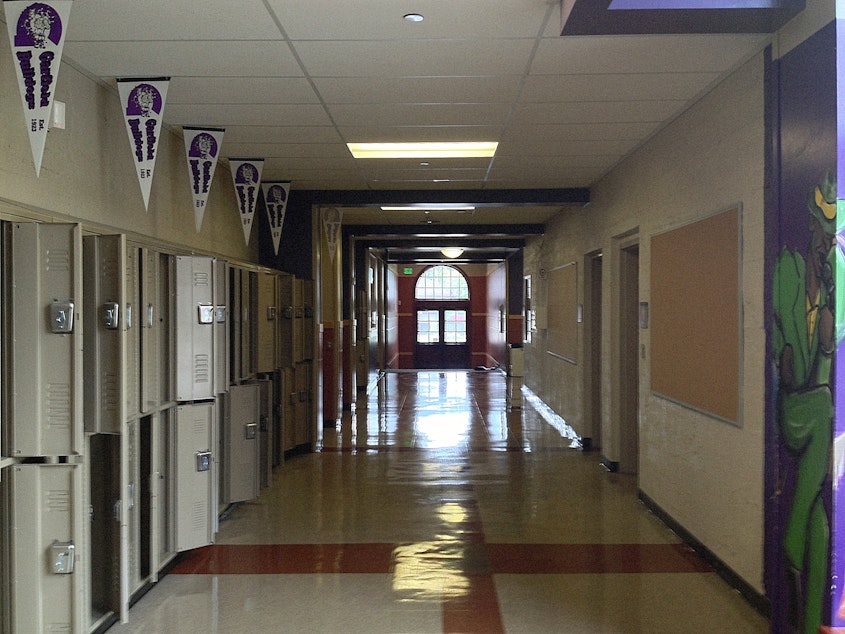In distance learning, many Seattle-area teachers worry about the students left behind

Seattle-area teachers say the first few weeks of distance learning have been a learning experience for them, too – from the new technology they are trying to master, to the challenges of getting in contact with some students.
Many low-income families change addresses — and phone numbers —during the school year, making directory information for some students is unreliable. Additionally, a lot of families only use email occasionally.
When Melanie Norris, who teaches at Spruce Elementary School in Lynnwood, tried to contact her students’ parents, she got numerous wrong numbers and letters returned as undeliverable.
Norris said when she did her first virtual class meeting through Zoom, just 13 out of 20 students in her class attended. “I was just so, so pleased. But that took a lot of work. That took e-mails, phone calls and letters home trying to get them onto a routine.”
Seattle Public Schools data show that as of last week, only 72% of students had logged on to the district’s online portal for distance learning assignments. Just 60% of Black boys – who are at the center of a strategic plan the district adopted last year – had logged on.
Some of those students may be receiving assignments by another medium: The state instructed districts to ensure that students who lack internet access get schoolwork in another form, such as in paper or over the phone.
In Seattle, kids can pick up paper packets with learning activities at meal distribution sites, and some teachers are mailing home assignments for students. Still, the vast majority of remote lessons are being conducted online.
Seniors who were on track to graduate when schools closed should all still graduate in June, so long as they participate in distance learning. But students who were not quite on track to graduate – seniors who were missing a couple credits, or who were at risk of not passing classes they needed for their diplomas — are in a tougher spot.
Typically at this time of year, high school teachers work double-time with many of those students to help them make up work they’ve missed or help them reclaim credits they lack.
That’s hard work in person, and it is even harder at a distance, especially when many of those students now may have additional responsibilities, like caring for younger siblings or cousins, or working to support their families.
And the high rate of absenteeism, especially amongst the most vulnerable students, makes many high school teachers worry that the pandemic will lead to a jump in the drop-out rate.
Starr McKittrick, who teaches humanities and language and composition at Nathan Hale High School, said she’s deeply concerned about some of her students.
“There are definitely kids who aren't showing up to class,” McKittrick said. “Some of them are those same kids who've had problems coming to class before. And now ... I think that this situation makes it even easier for them to kind of slip into the cracks and disappear.”
For some special education teachers, the inability to work in person with their students is painfully frustrating.
Connor Lee, a special education assistant at Louisa Boren STEM K-8 school in Seattle, said that the main lessons many of his students need to learn is not academic — it’s how to be successful in a classroom.
Lee said he and his colleagues have done some online story-reading and singing with students. But, he said, a virtual classroom “is not going to allow for many of the lessons we're trying to teach,” including giving students feedback about how they’re doing.
Online coursework poses inherent challenges for many young students with disabilities, Lee said, and not all of his students’ parents speak fluent English.
“It's an imperfect solution to just send home more work packets, and then expect the parents or guardians at home to be able to implement that,” Lee said. “But that's really all that we have.”

